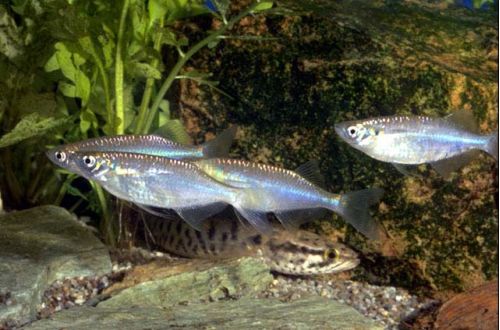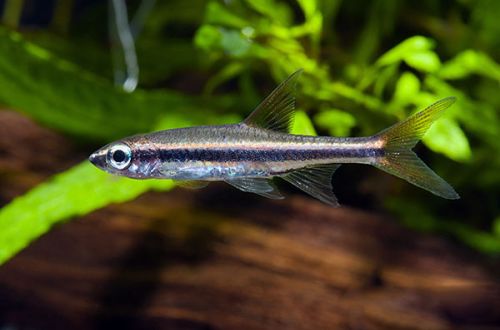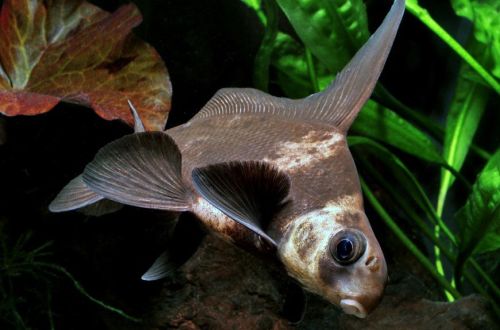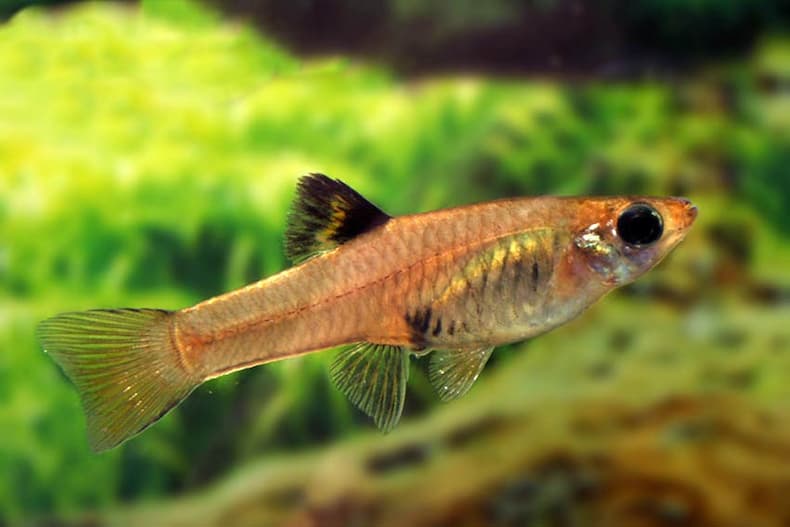
golden teddy
Xenofallus yellowish or Golden Teddy, scientific name Xenophallus umbratilis, belongs to the family Poeciliidae (Peciliaceae). Beautiful bright fish. Keeping has a number of challenges in terms of maintaining high water quality and is therefore not recommended for beginner aquarists.

Contents
Habitat
It comes from Central America from the plateau in the east of Costa Rica. Inhabits calm backwaters of rivers and lakes. Keeps close to the coast among thickets of aquatic plants.
Brief information:
- The volume of the aquarium – from 80 liters.
- Temperature – 22-26°C
- pH value is about 7.0
- Water hardness – 2–12 dGH
- Substrate type – any
- Lighting – subdued
- Brackish water – no
- Water movement – little or no
- The size of the fish is 4–6 cm.
- Food – any food
- Temperament – peaceful
- Content – in a group of 3-4 individuals
Description
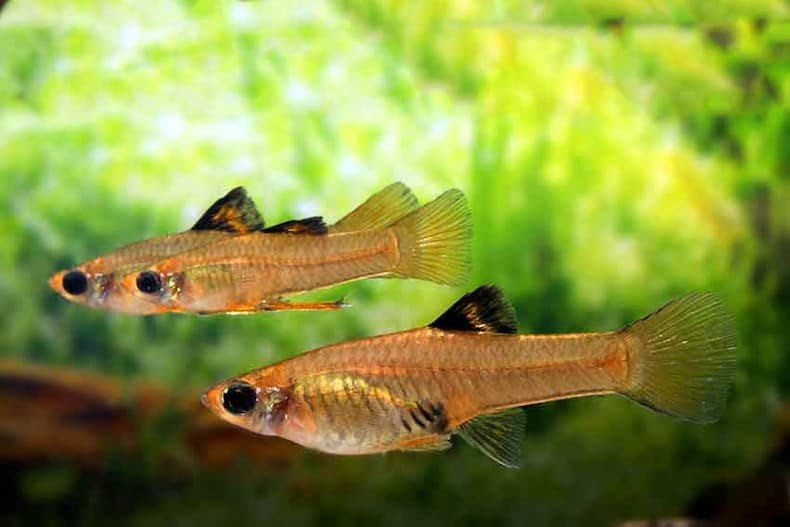
The fish has a bright yellow or golden color. The integuments of the body are translucent, through which the spine is clearly visible. The dorsal fin is black, the rest are colorless. Males grow up to 4 cm, look slimmer than females (up to 6 cm) and have a characteristic modified anal fin – gonopodium.
Food
In nature, they feed on small invertebrates, plant debris, algae. Most popular foods will be accepted in the home aquarium. It is desirable that the composition of the products contained herbal ingredients.
Maintenance and care, arrangement of the aquarium
Golden Teddy is mobile and prefers to be in a group of relatives, so despite its modest size, a relatively spacious aquarium of 80 liters or more is required. The design uses a large number of rooting and floating plants. The latter will serve as a means of shading. It is worth avoiding bright light, in such conditions the fish lose their color.
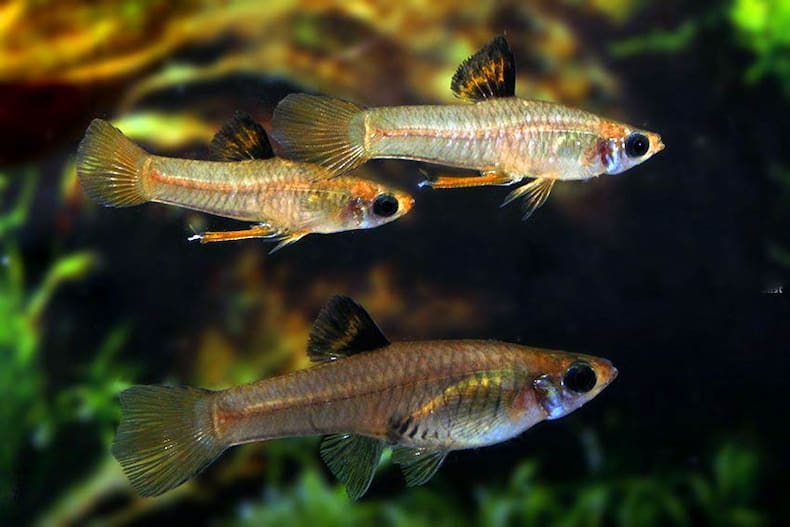
It is generally accepted that viviparous species are hardy and unpretentious, but the Golden Teddy is an exception. It is demanding on the hydrochemical composition of water. It does not tolerate pH deviations from neutral values well and is sensitive to the accumulation of organic waste. The optimum water temperature is in a narrow range of four degrees – 22-26.
Behavior and Compatibility
Active friendly fish, it is desirable to keep in a group, one by one they become shy. Other freshwater peaceful species of comparable size are suitable as neighbors.
Breeding / breeding
Upon reaching maturity, which occurs at 3-4 months, they begin to give offspring. Under favorable conditions, the incubation period lasts 28 days, after which 15–20 fully formed fry appear. Although Xenofallus yellowish has no parental instincts, they are not inclined to eat their own offspring. In a species aquarium, in the presence of thickets of small-leaved plants, juveniles can develop together with adult fish.
Fish diseases
The main cause of most diseases in the aquarium are unsuitable conditions. For such a hardy fish, the manifestation of one or another disease is likely to mean significant deterioration of the habitat. Usually, the restoration of comfortable conditions contributes to recovery, but if symptoms persist, medical treatment will be required. For more information on symptoms and treatments, see the Aquarium Fish Diseases section.



